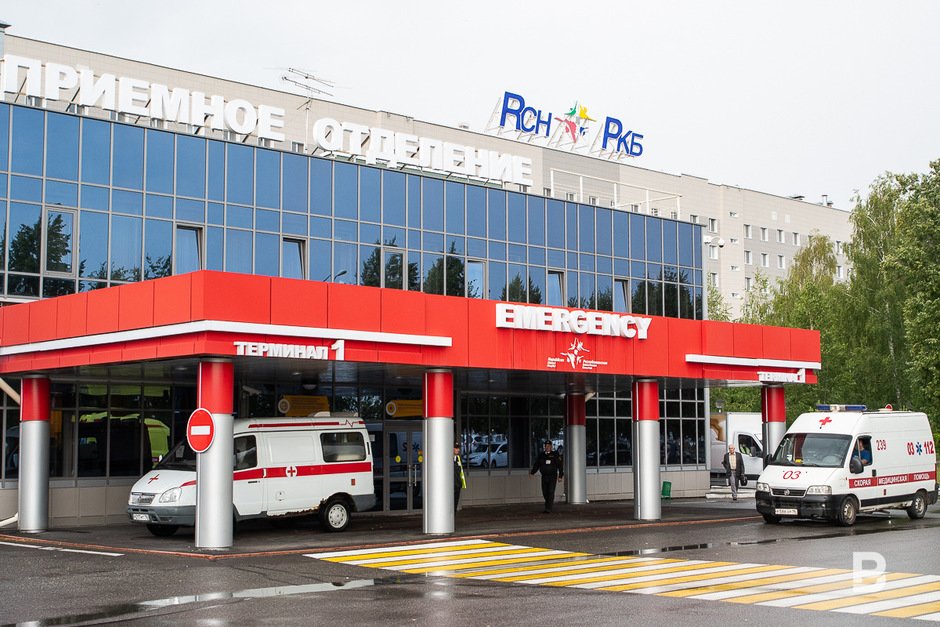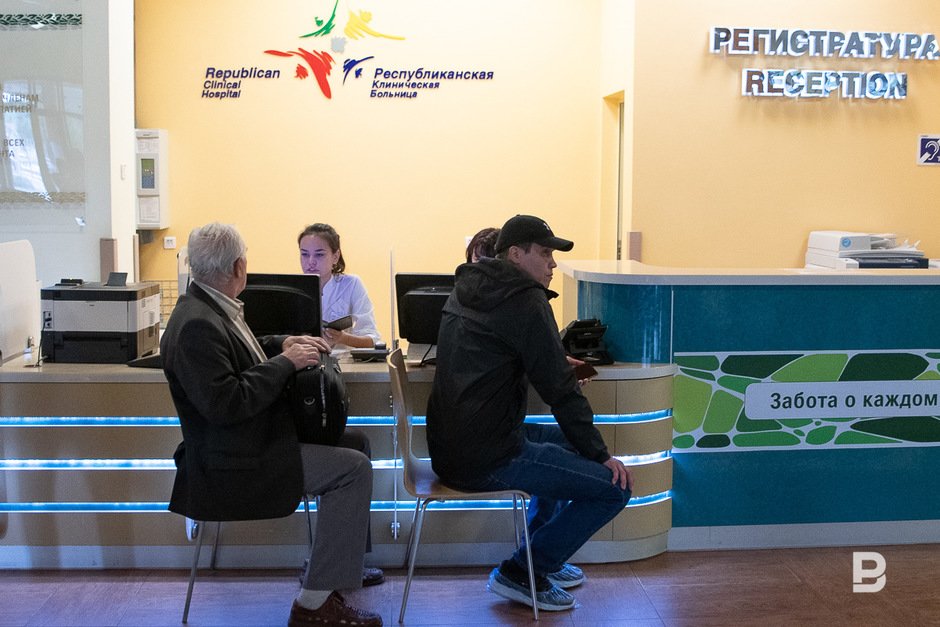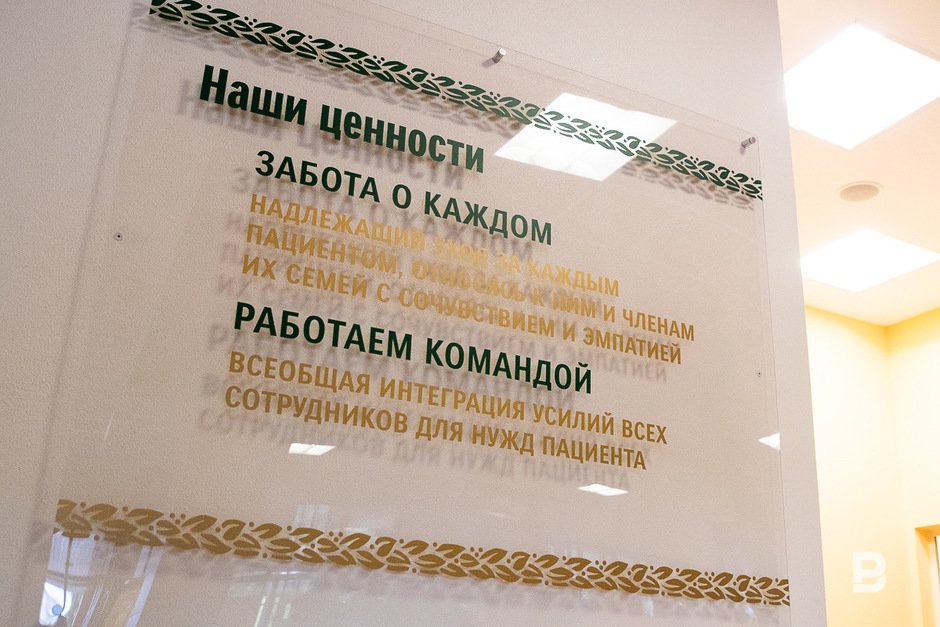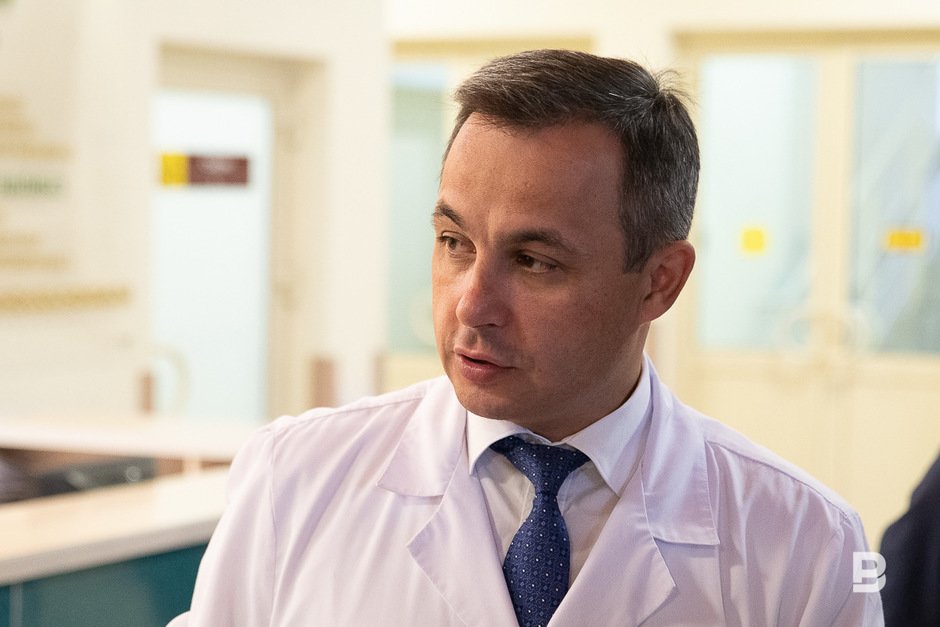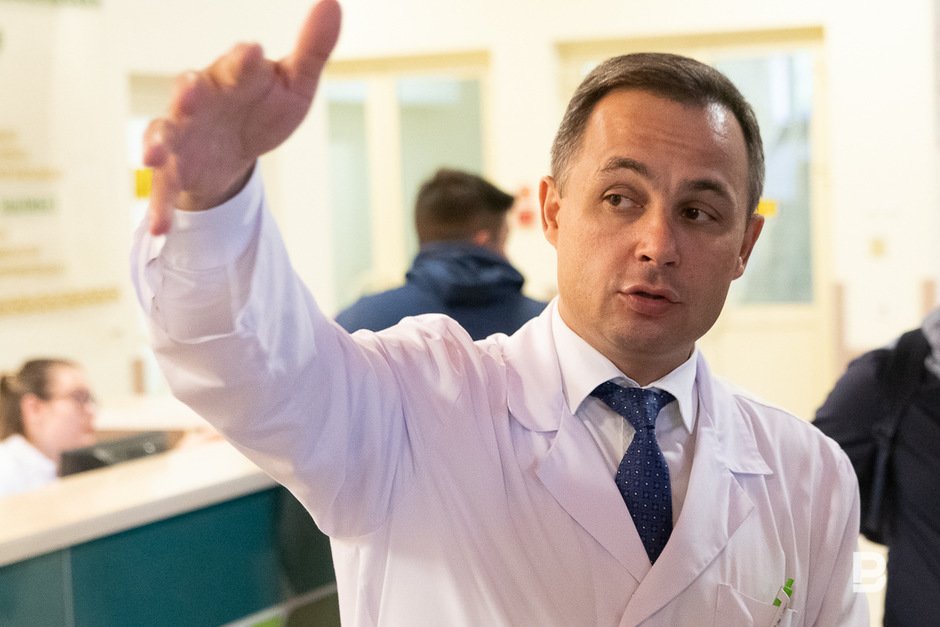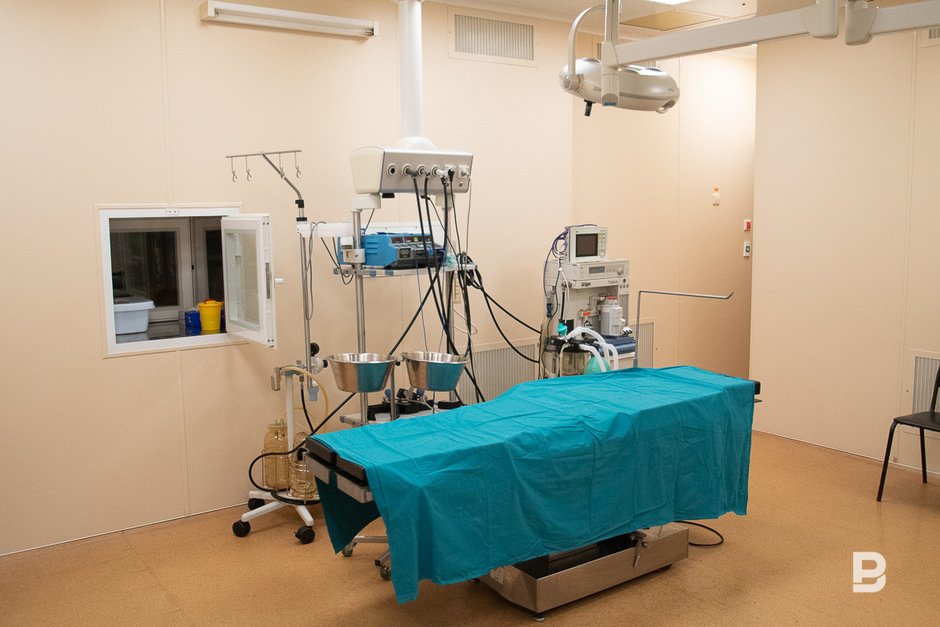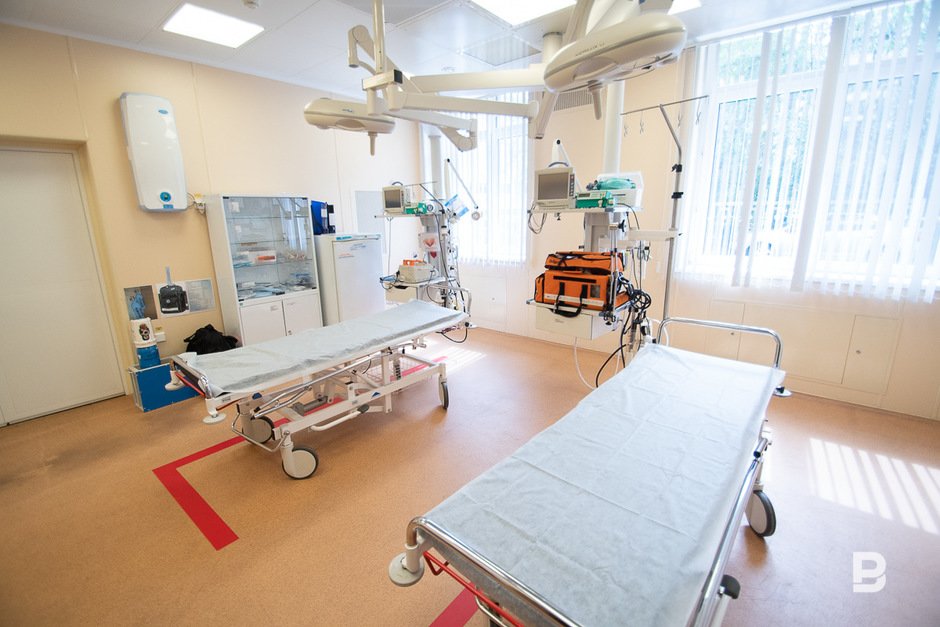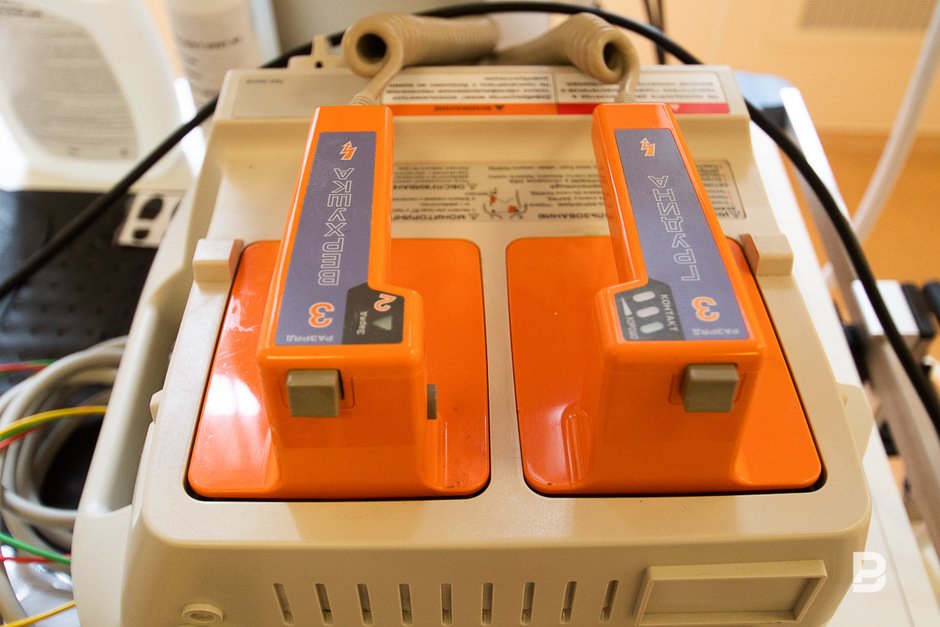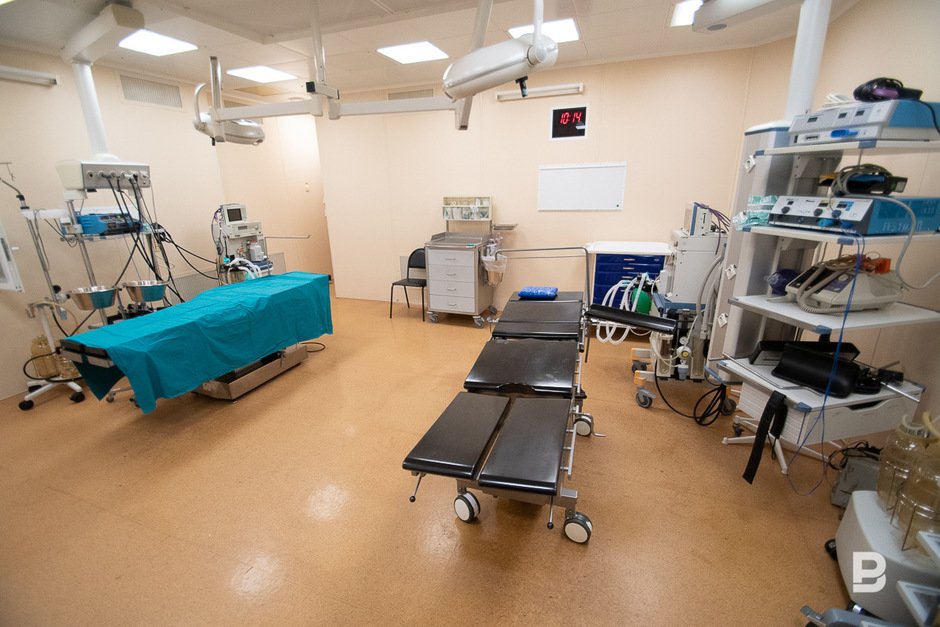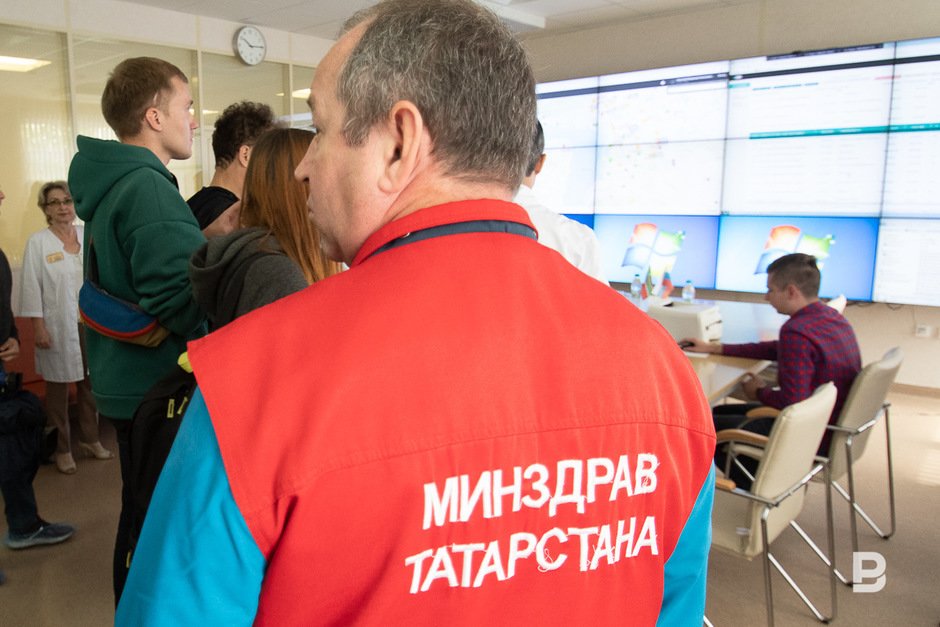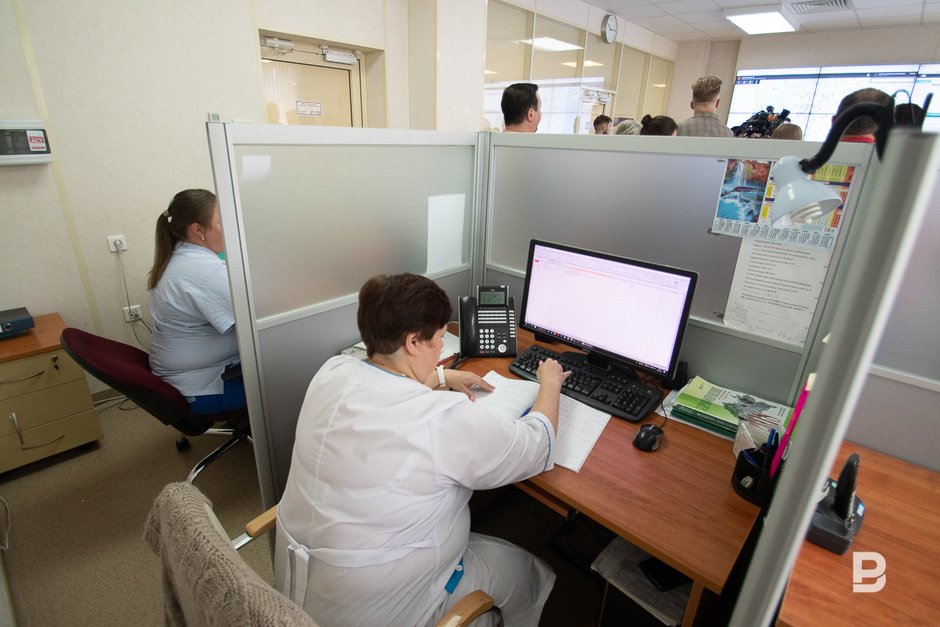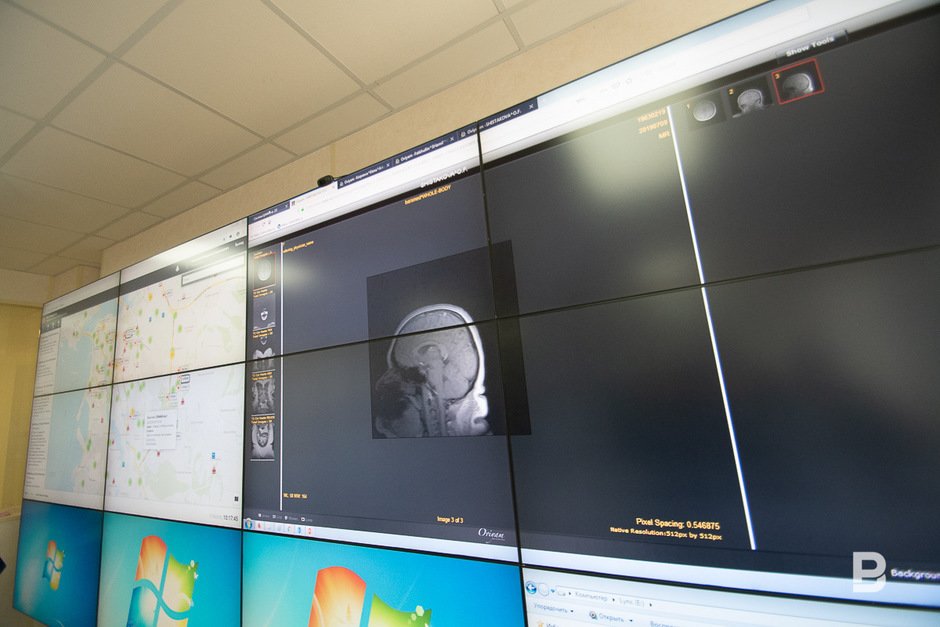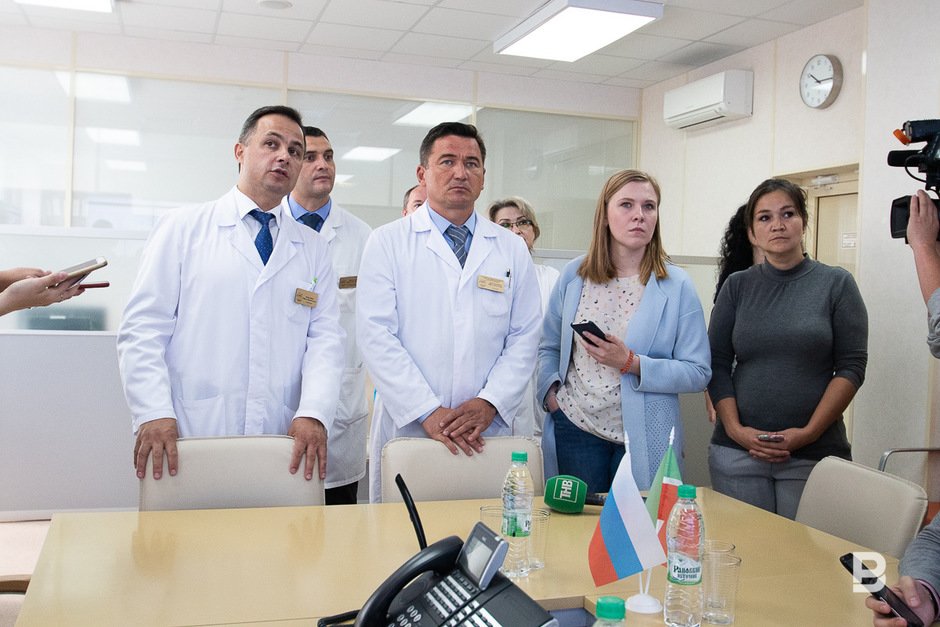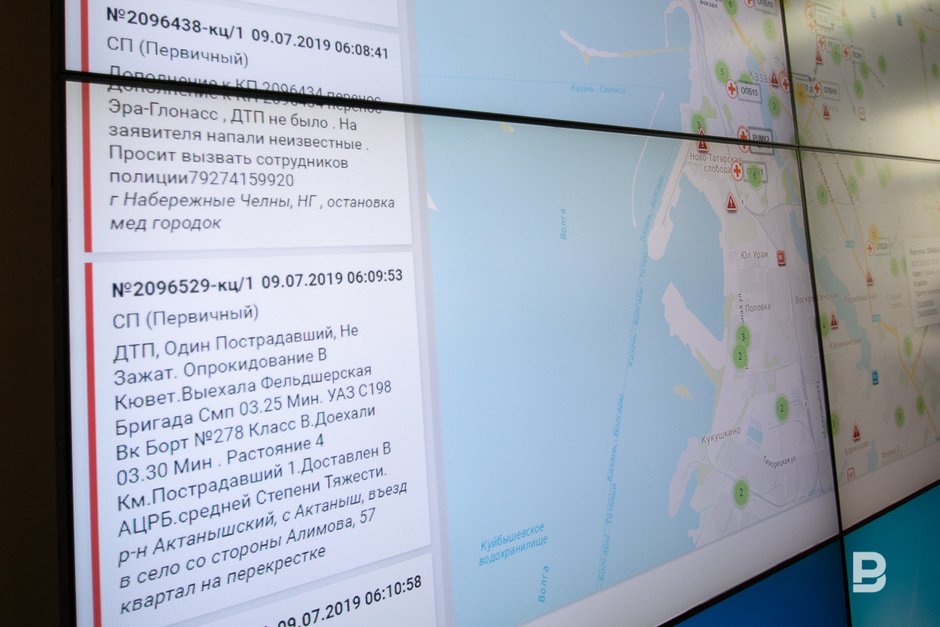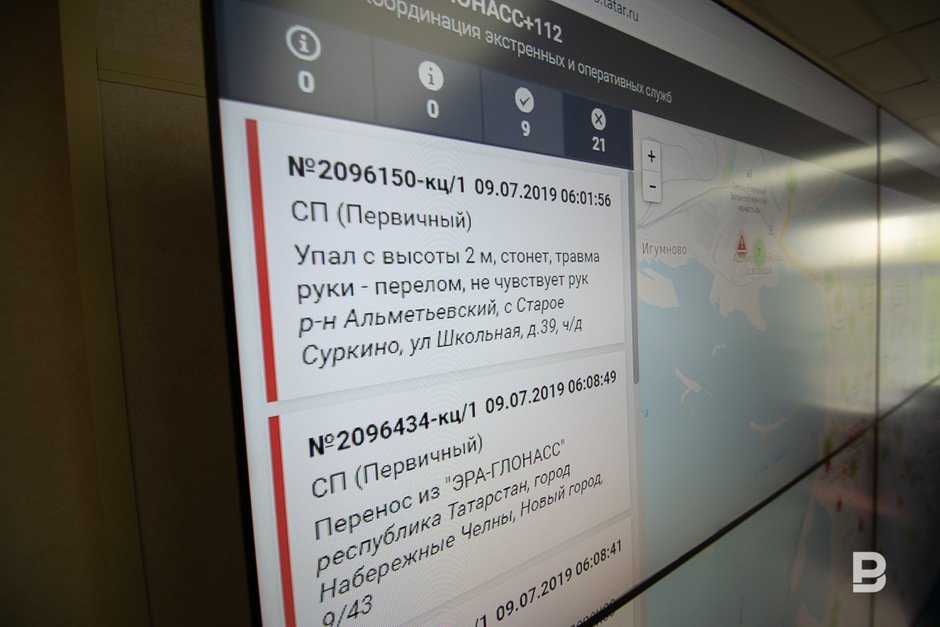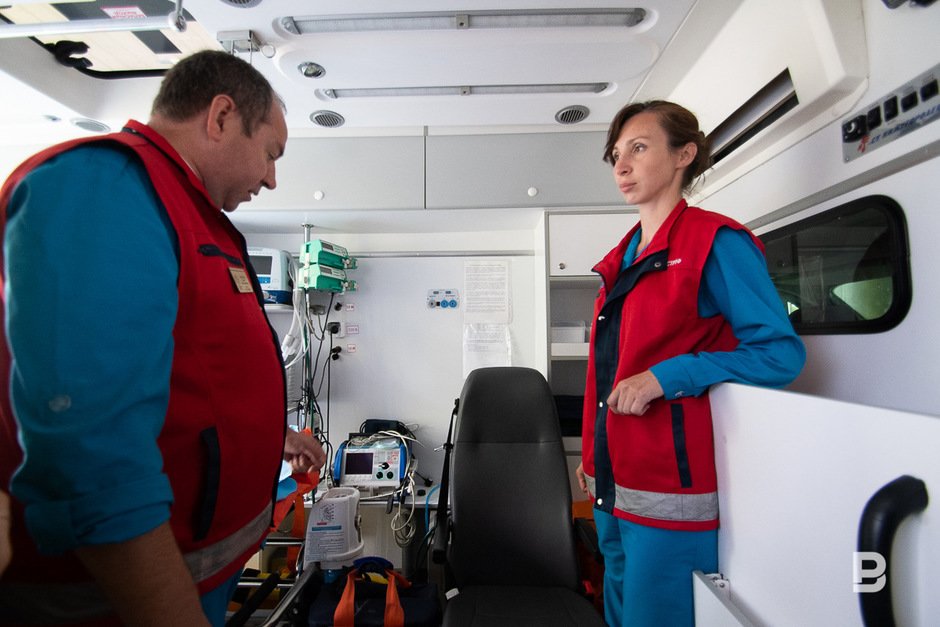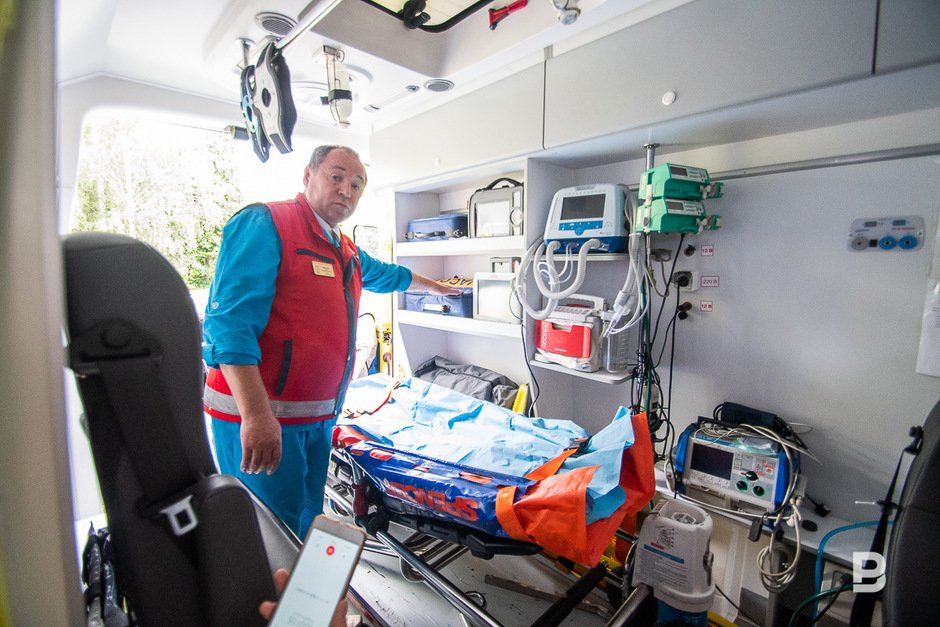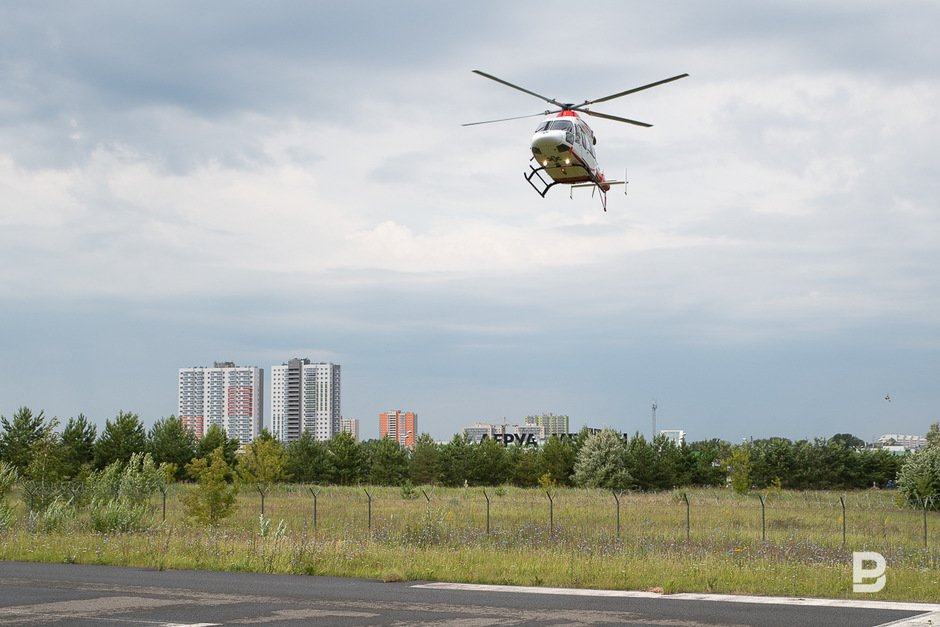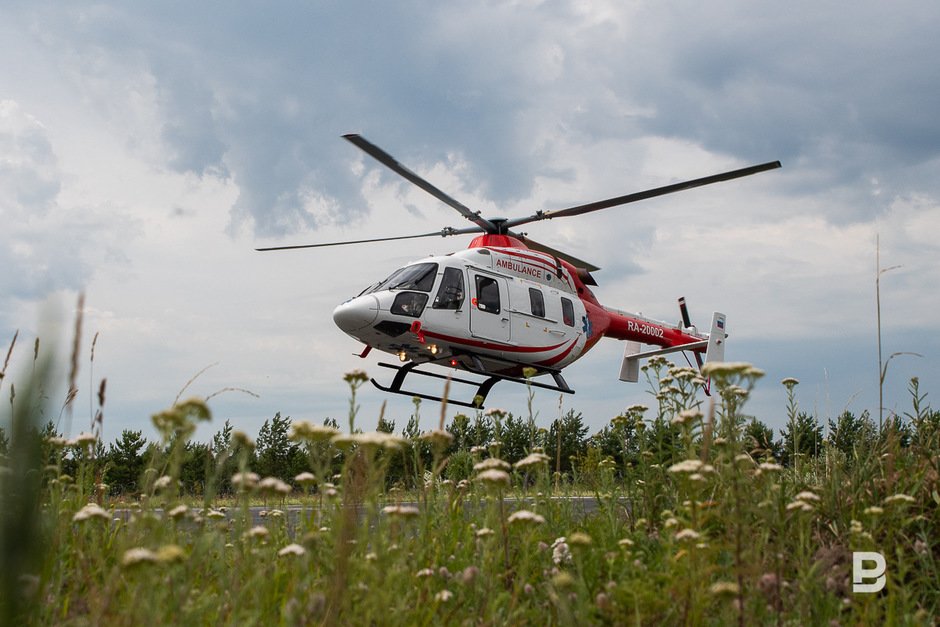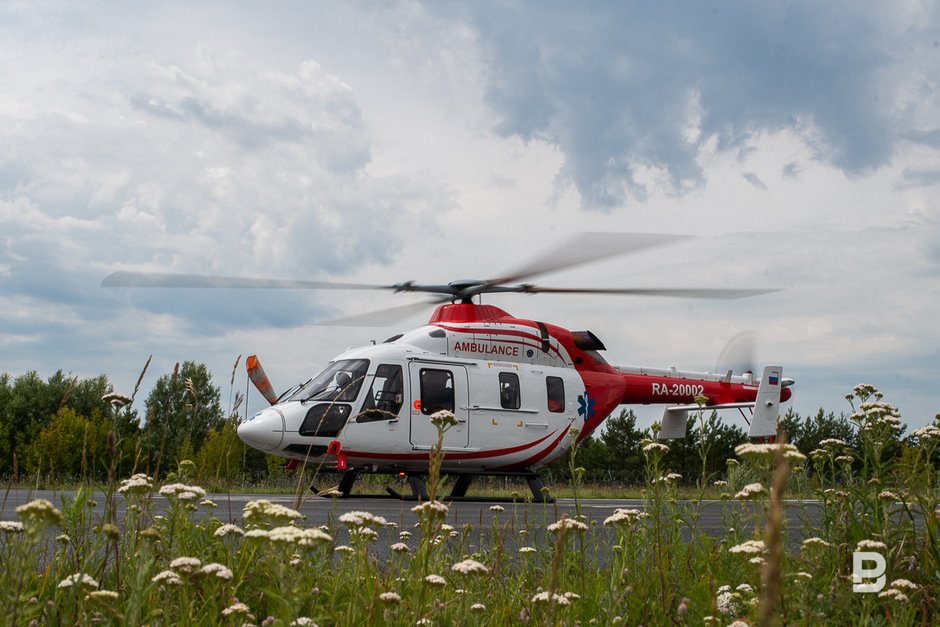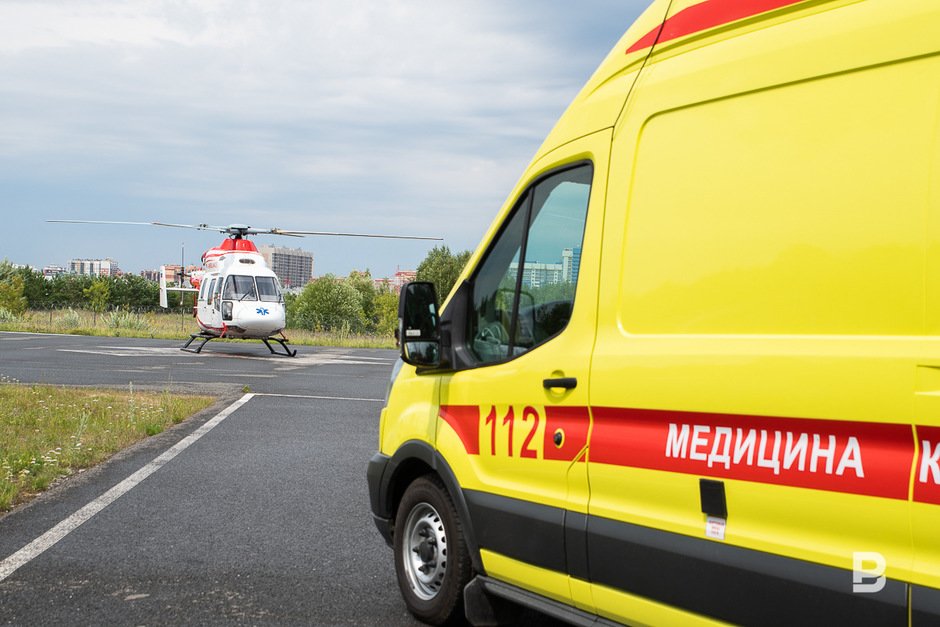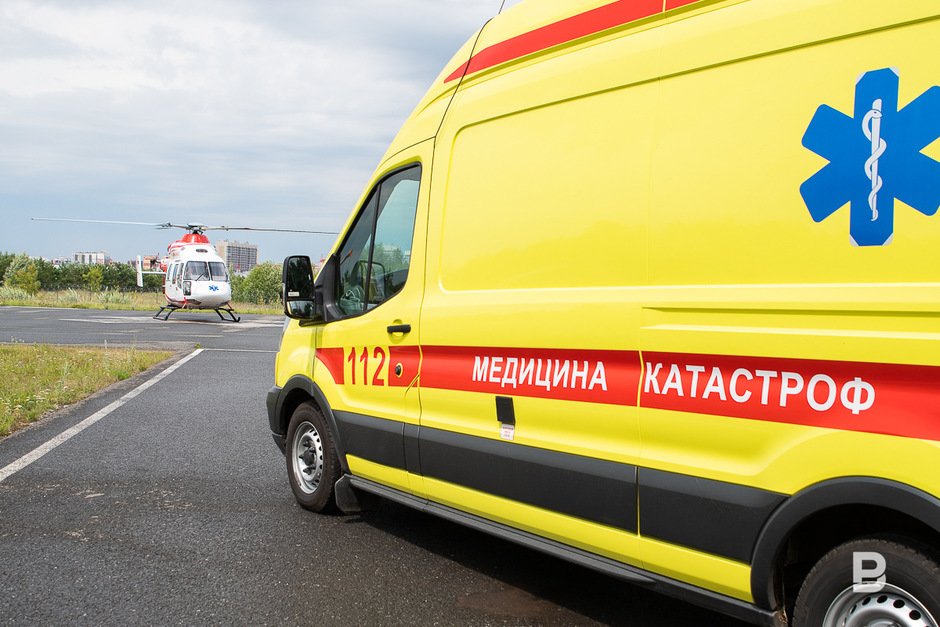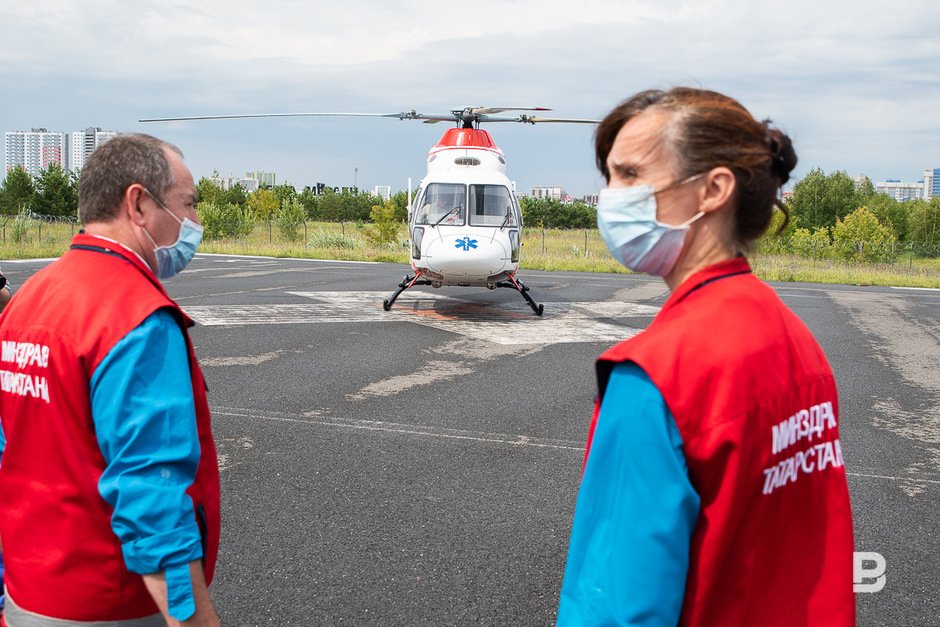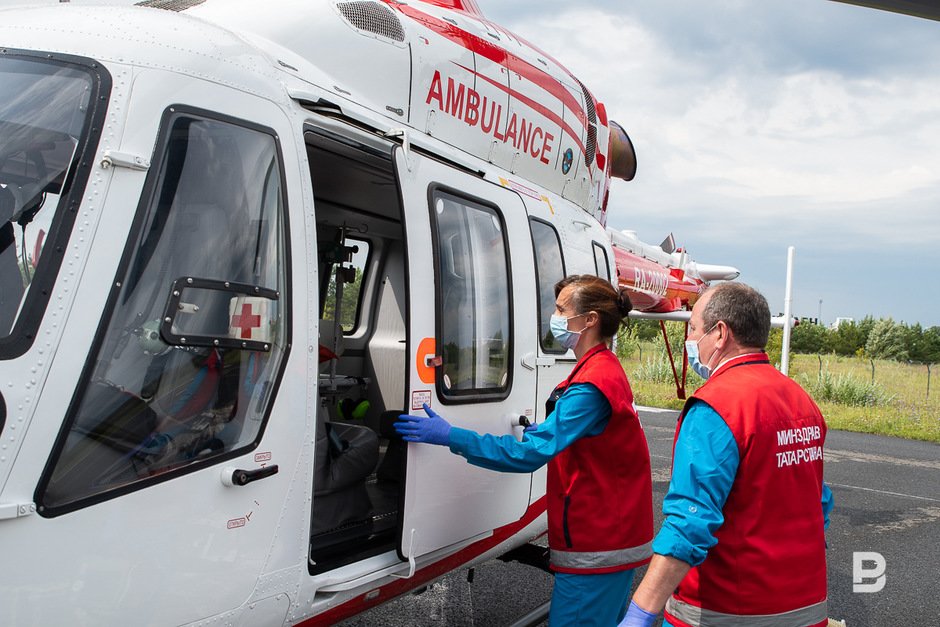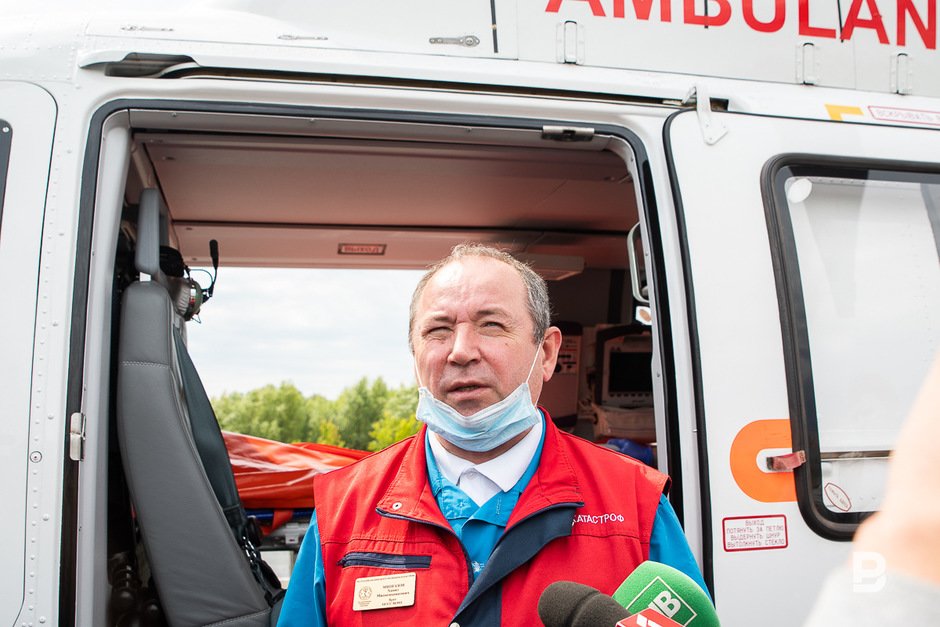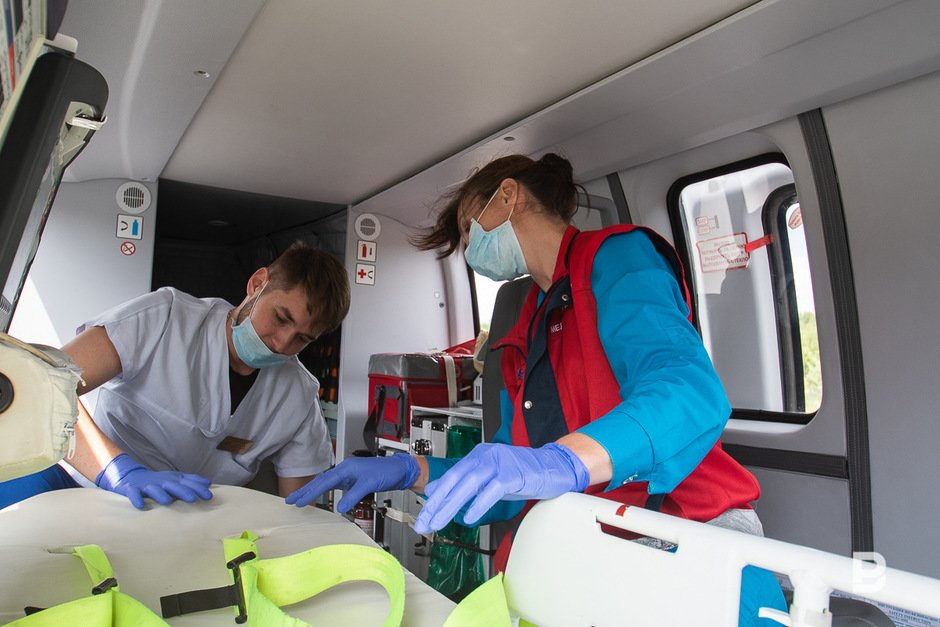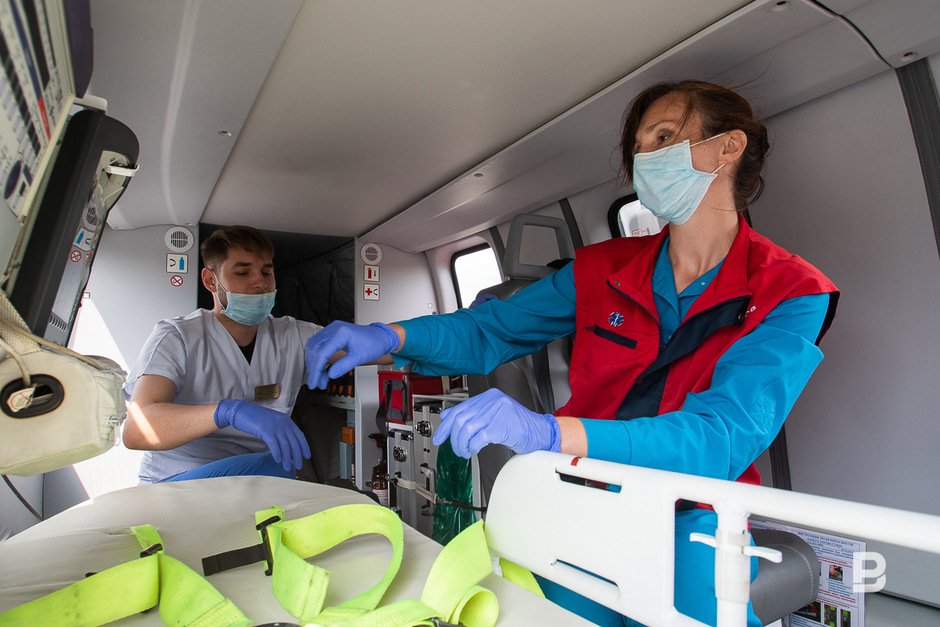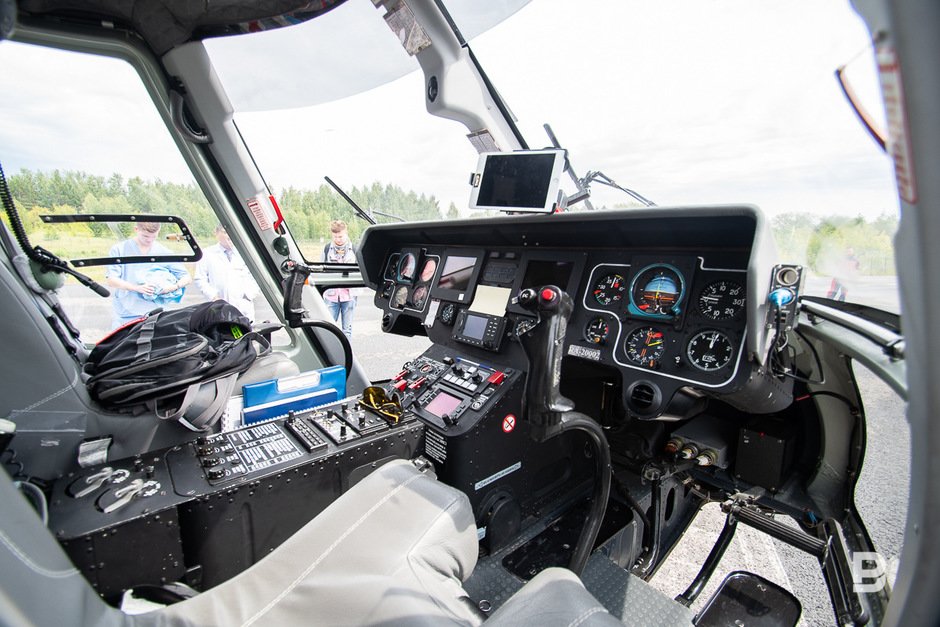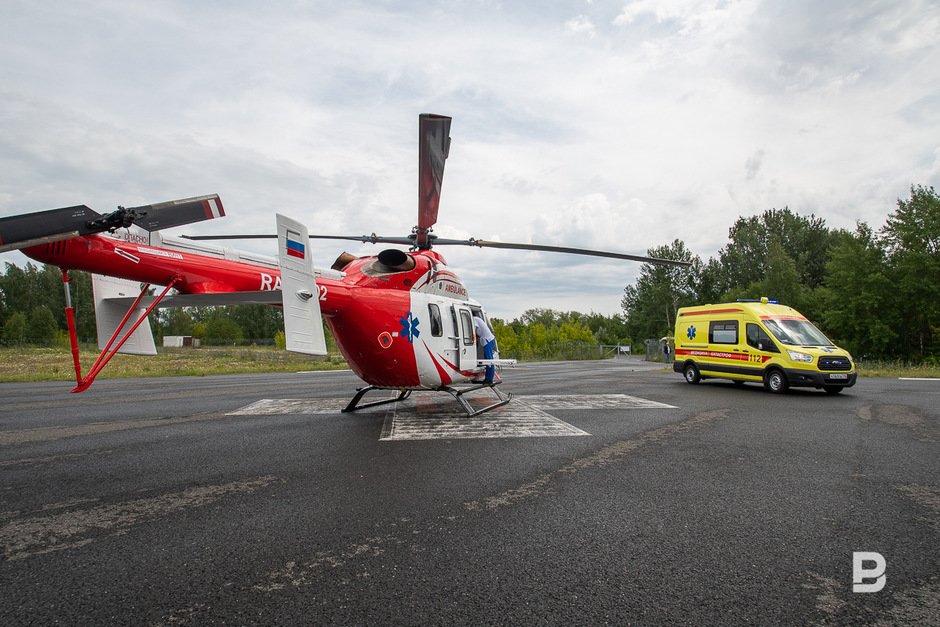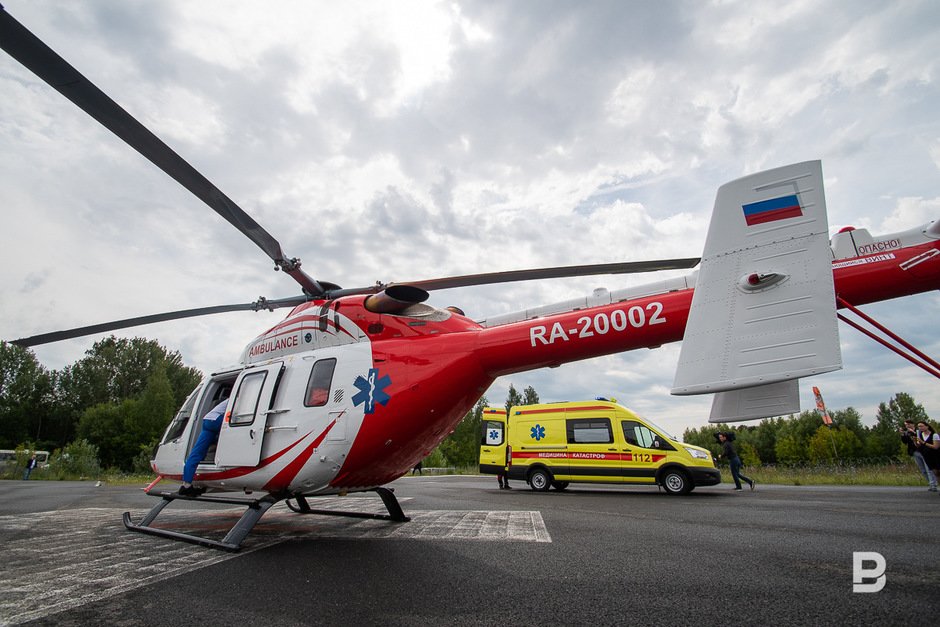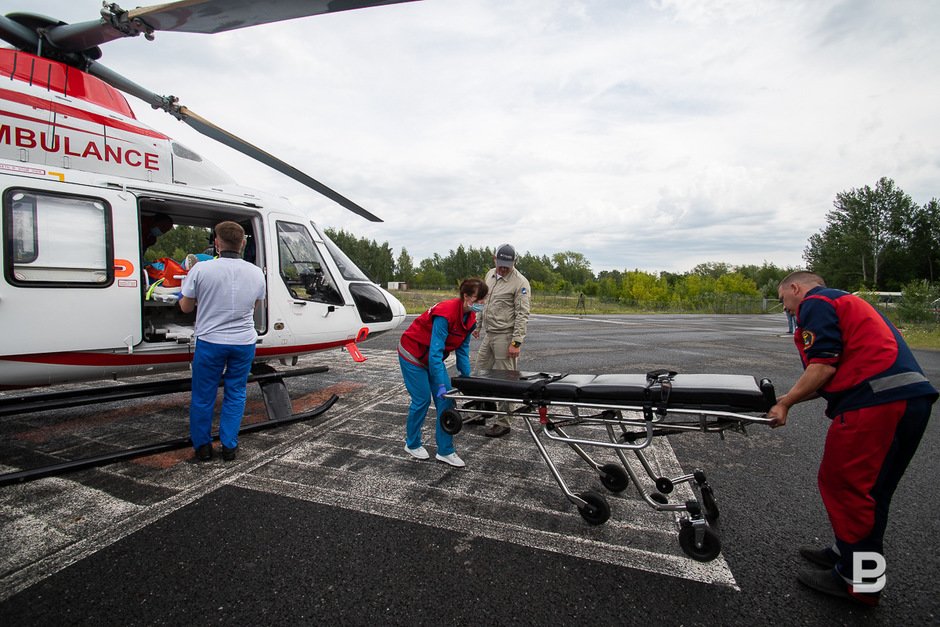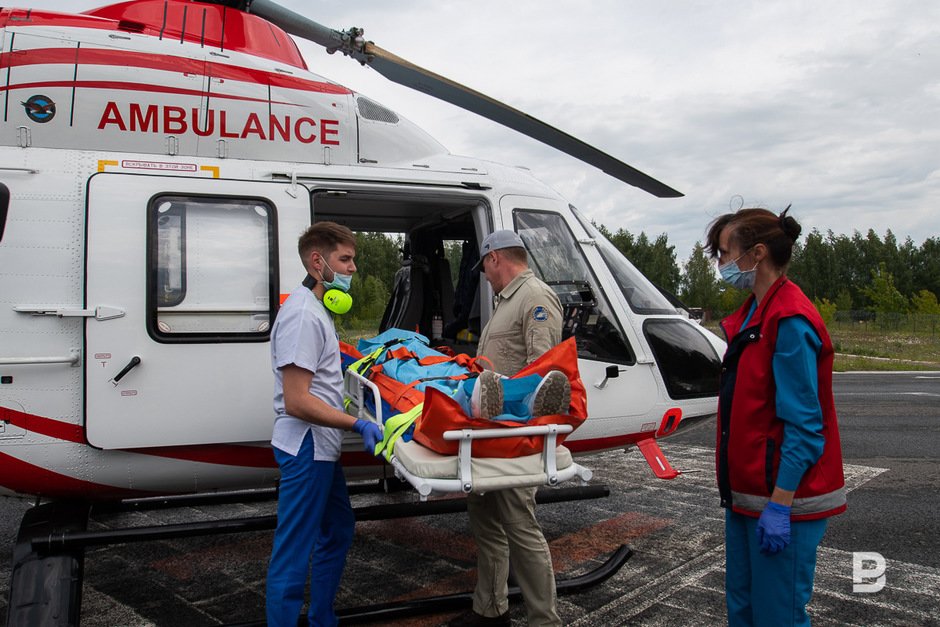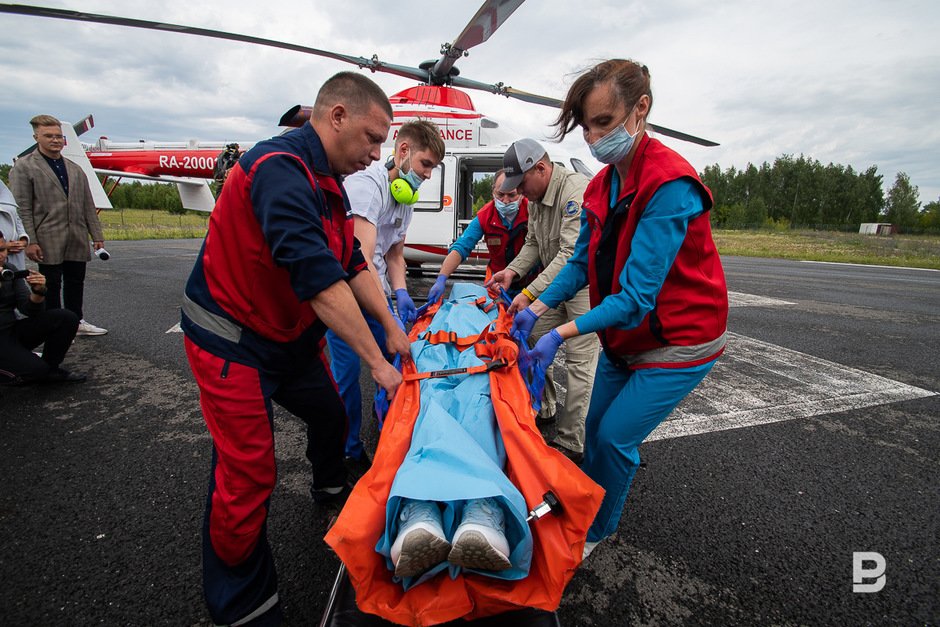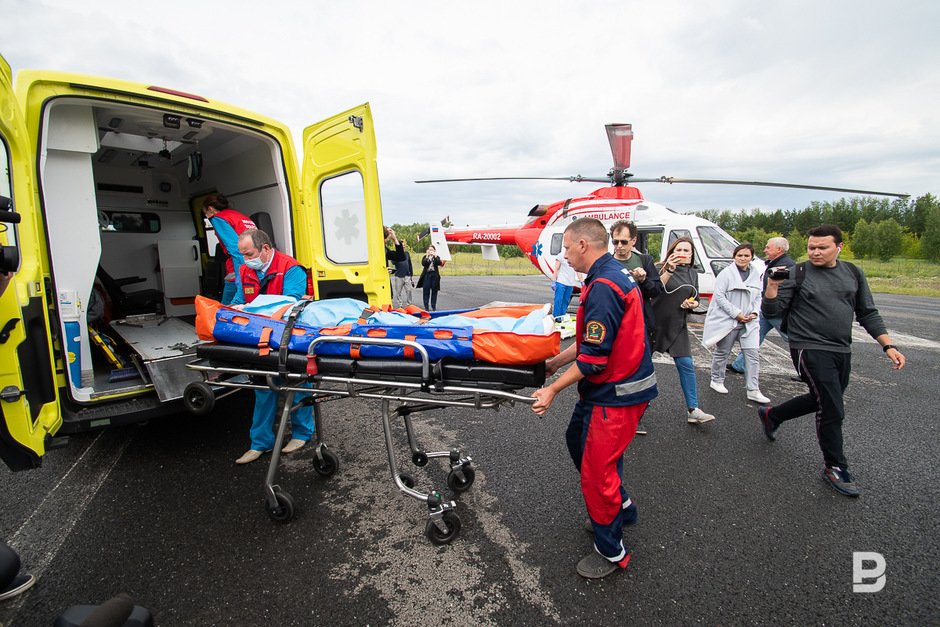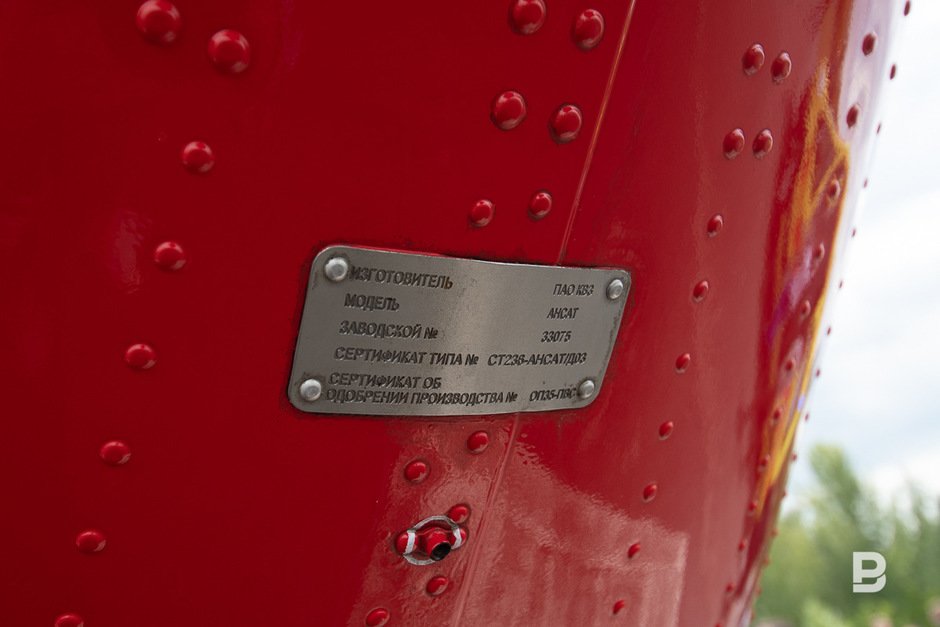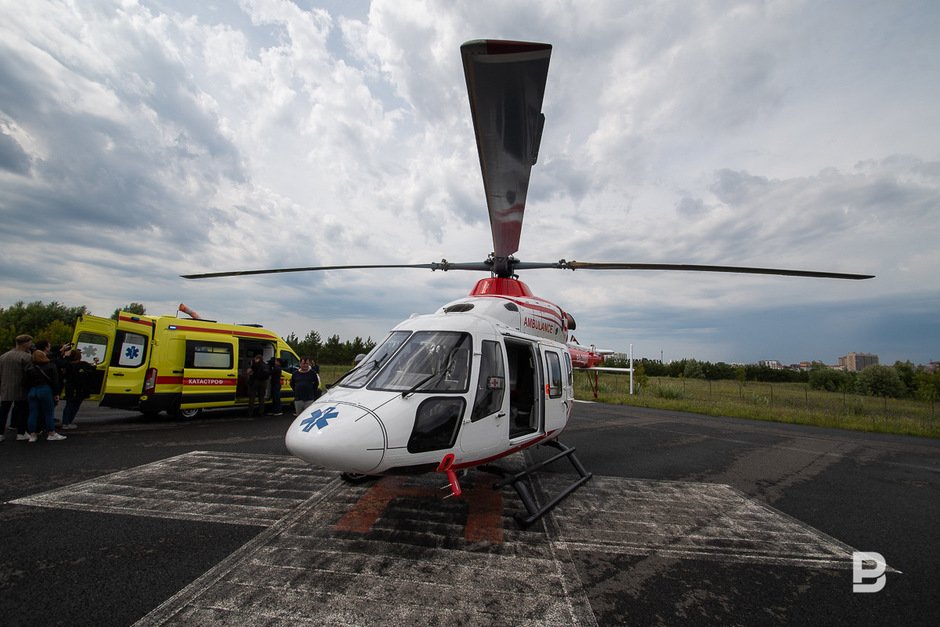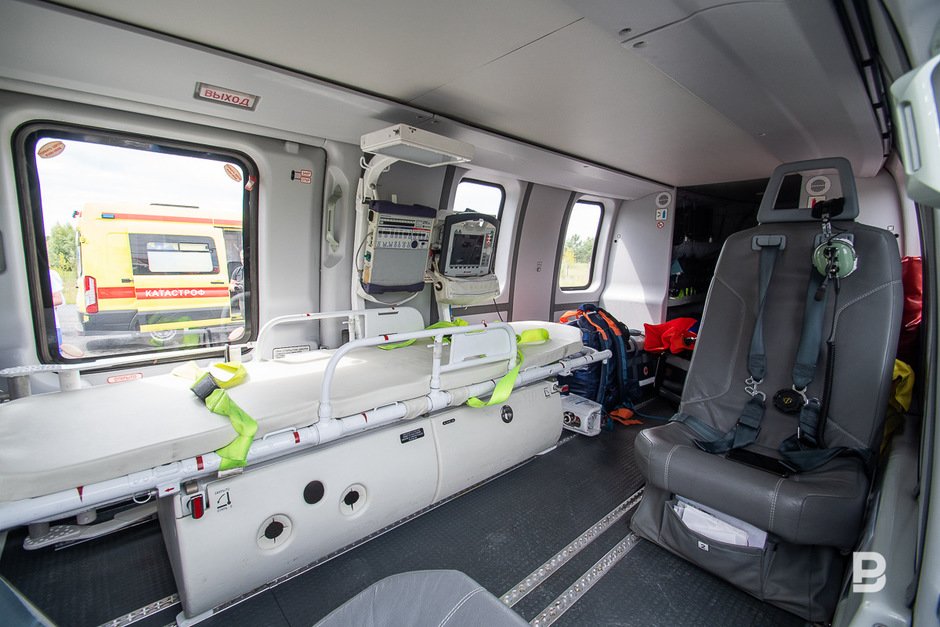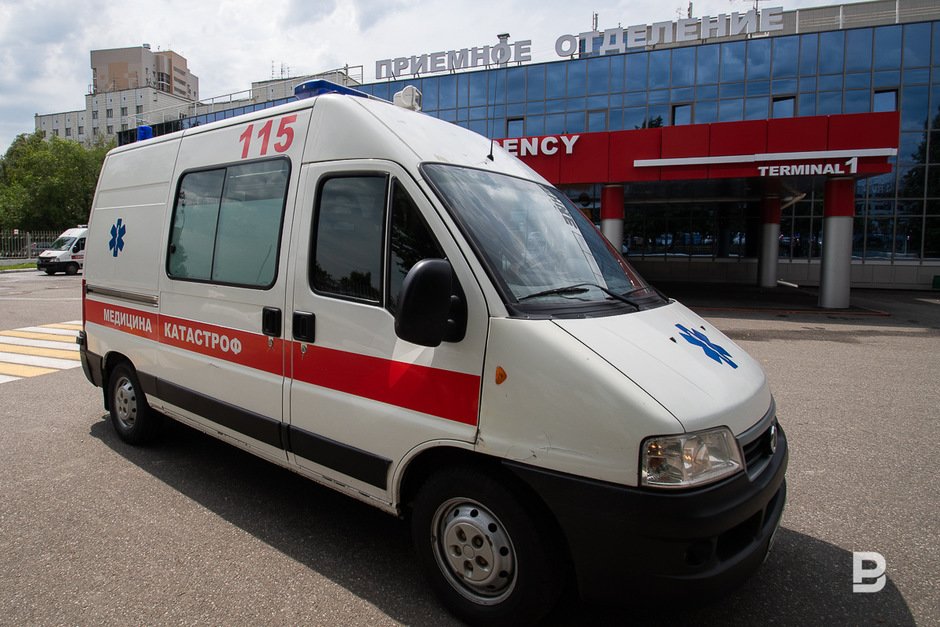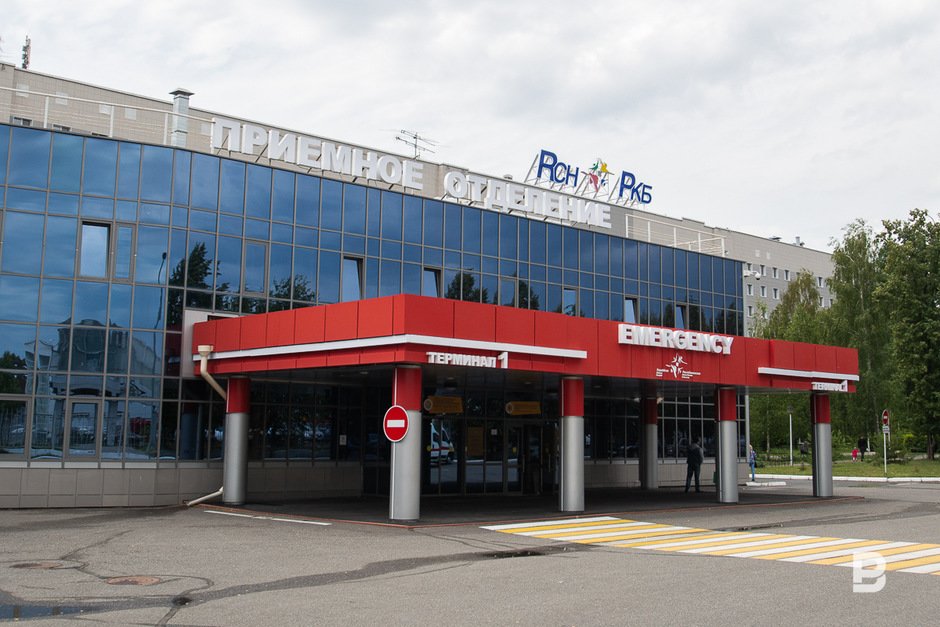Heavenly ambulance: Tatarstan air ambulance to augment flights and fleet
Doctors of the republic have had almost a hundred flights since the beginning of the year
Medical helicopters in Tatarstan operate 3-4 flights a day and allow reducing the travel time doctors spend 2-3 times — and this happens in a region where time in the norms of medical aid is limited. The Republic Clinical Hospital said on 9 July where the republic’s air ambulance went and how much a flight cost, though, as the service says, after introducing national projects, air ambulance doesn’t economise and is available to everyone. More is in Realnoe Vremya’s report.
With pinpoint accuracy
The air ambulance or, more precisely, the department of consultative first aid in Tatarstan, comes under the Republic Clinical Hospital (RCH) and works 24/7. The phrase «runs like clockwork» is also applicable to this department. There is a time standard for all actions here. Any patient who called the emergency ward must get help within 60 minutes. An air ambulance brigade is ready to fly to any point of the republic in 20 minutes. The time after a patient with a heart attack is admitted and the beginning of surgery must be no more than 15 minutes. The time from the ward’s door to that of the operating theatre must be eight seconds.
In this respect, the role of the air ambulance is hard to be overestimated. Helicopters allow reducing the travel time 2-3 times and help use big medical resources of the RCH at any point of the republic.
The air ambulance works in several areas: delivery of patients from remote districts to the RCH, which has all necessary specialists for any unimaginable aid, and delivery of such specialists to remote districts. In addition, employees of the service — experienced and qualified doctors — consult colleagues from small settlements online.
As head doctor of the RCH Rafael Shavaliyev explains, the department has three helicopters now — Robinson (R-44), Mi-2 and Mi-8 as well as six mobile intensive care unit. The air ambulance employees more often go to the spot by car: aid in 97 out of 368 emergency calls was given by helicopter and 271 by road transport. They also resort to road transport when the weather is bad like it was on 9 July early morning in Kazan. But with good weather conditions, the air ambulance operates 3-4 flights a day.
After the weather was set fair at about 10 a.m. on 9 July, an air ambulance helicopter headed to Tyulyachi to deliver a patient with stomach bleeding to the RCH. Earlier at night, the helicopter had transported an RCH endoscopist there who helped to stop the bleeding and prepare the patient for transportation. A one-way flight takes 40 minutes, the trip would have taken 2-3 times more by car.
Where ambulance helicopters fly and land
The RCH air ambulance is able to get to any point of Tatarstan, it takes about 1,5 hours to the remotest part. But, as acting head of the republican centre for emergency medicine Liliya Chalaya, the geography of the service is much wider. The air ambulance employees also go to neighbouring regions, especially in case of big traffic accidents. When residents of Tatarstan are in trouble, the specialists of the service travel further. Chalaya says that they have gone to CIS countries. Once the employees have gone to a citizen of Tatarstan to London, but not by helicopter.
To put an example of the work, Chalaya talks about a recent fire on one of the industrial sites in Nizhnekamsk. A specialist from the RCH’s burns unit arrived in the city an hour later by helicopter who prepared the injured to transportation and decided who needed (and could) be transported to Kazan first of all. In addition, one of the injured was sent to Bashkiria by helicopter, as he was a resident of this republic.
The RCH’s helicopter site is located three kilometres far from the hospital itself, it takes a mobile intensive care unit a bit more than 10 minutes to make a one-way trip. A number of big medical establishments have helicopter sites (for instance, the Emergency Hospital in Chelny) and on federal highways and places with a big number of traffic accidents. However, if there is no such a site, helicopters can land on usual car parking next to a medical establishment.
Air ambulance to raise the rate of flights and purchase additional helicopters
The air ambulance develops in Tatarstan, first of all, within Health Care national project. According to the Tatarstan Ministry of Economy (the agency coordinates the implementation of national projects in the republic), 137,5 million rubles are planned to be spent on the area Development of First Aid System in 2019. The RCH doesn’t reveal financial indicators of the programme in the air ambulance service, but it is already known what the money is going to be spent on.
First of all, the financing of flights is going to augment. The air ambulance has quotas for a number of flights, it is 220 flights in 2019. In addition, quotas regularly increase. Head of the Department of Consultative First Aid of the RCH Rafael Nigmatzyanov told Realnoe Vremya’s correspondent that after getting money in the national project, the air ambulance can fly without looking at the cost of flights. According to him, an hour of flight is about 166,000 rubles.
“We allocate these quotas according to the experience of previous years and the volume of financing. It is clear that flights don't come cheap, but both the government of Russia and the Ministry of Health have a clear understanding of the necessity of this area. And annual quotas augment,” Shavaliyev told the journalists.
“The quotas don’t mean we should be selective about patients, just so you understand. The air ambulance is available to all,” Nigmatzyanov added.
The helicopter fleet is going to expand, Chalaya added. In addition, the air ambulance is going to purchase two Ansat helicopters, one by 2021 and the second by 2024. One of these helicopters will be adjusted to night-time flights.
By the way, Ansat helicopters were chosen mainly because of the absence of helicopter sites in places air ambulance has to fly to. Shavaliyev explained that this model is well adjusted to landing in places with a deliberately equipped zone — on the same car parking.
However, Chalaya adds that they also receive financing in other programmes. For instance, helicopter sites for air ambulance are built within Road Traffic Security Improvement. Five such sites next to medical establishments and in places with a high number of traffic accidents have already been built since 2014. In addition, two mobile intensive care units and equipment for them are going to be additionally purchased for the service in this programme.
